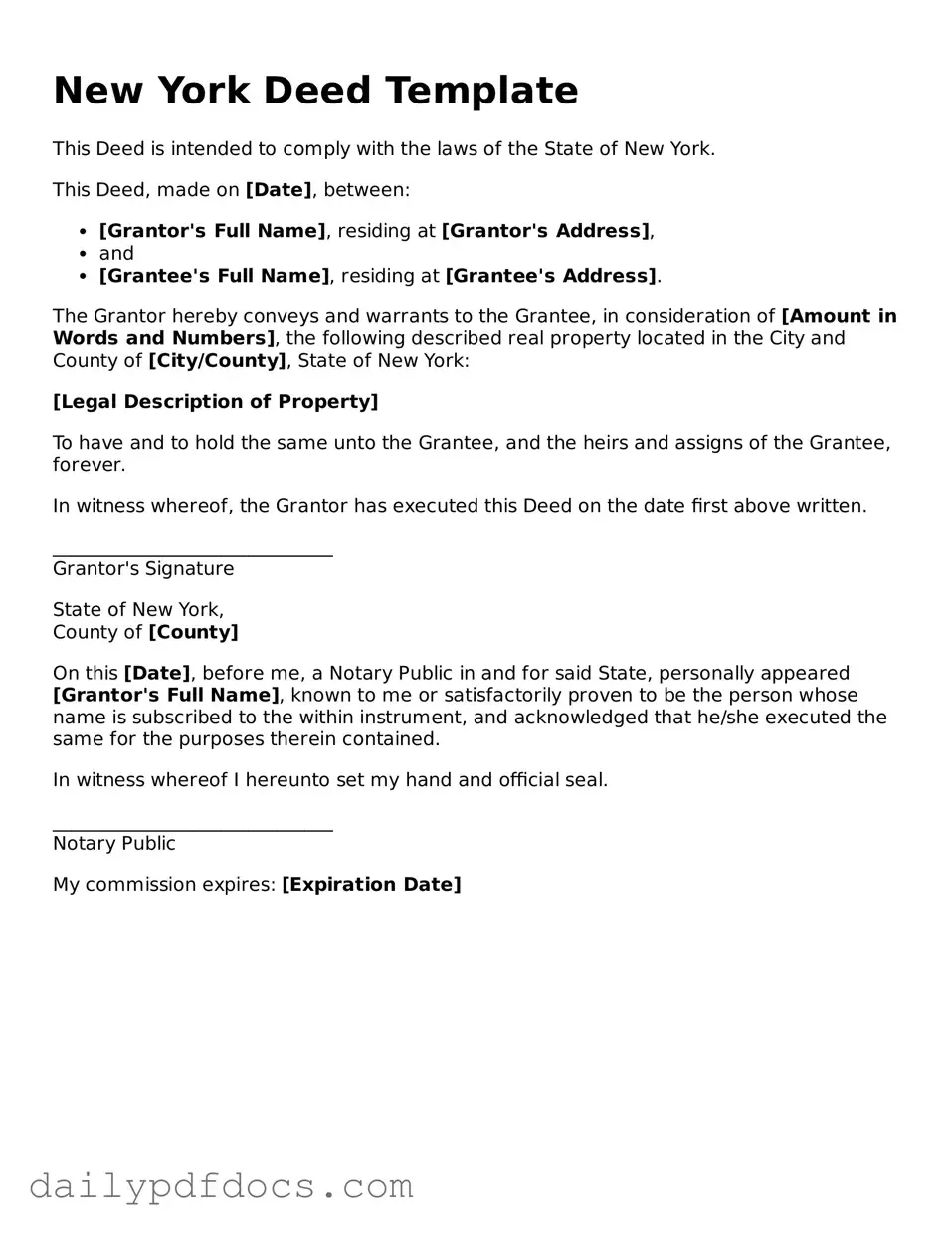What is a New York Deed form?
A New York Deed form is a legal document that transfers ownership of real property from one party to another. This form is essential in real estate transactions, as it serves as proof of ownership and outlines the details of the transfer, including the names of the parties involved and a description of the property. It is crucial to ensure that the deed is properly completed and filed with the county clerk’s office to make the transfer official.
What types of deeds are available in New York?
New York recognizes several types of deeds, each serving a different purpose. The most common types include the Warranty Deed, which guarantees that the seller holds clear title to the property; the Quitclaim Deed, which transfers any interest the seller may have without warranties; and the Bargain and Sale Deed, which implies that the seller has the right to sell the property but does not guarantee a clear title. Understanding the differences between these deeds is important for making informed decisions during a property transfer.
Who needs to sign the New York Deed form?
Typically, the New York Deed form must be signed by the person transferring the property, known as the grantor. If the property is owned jointly, all owners must sign the deed. Additionally, the deed may require notarization to verify the identities of the signers and to ensure the document is legally binding. It is advisable to consult with a professional to ensure all necessary signatures are obtained.
Do I need a lawyer to prepare a New York Deed form?
While it is not legally required to have a lawyer prepare a New York Deed form, it is highly recommended. A legal professional can help ensure that the deed is completed accurately and complies with all state laws. This can prevent potential disputes or issues with the property title in the future. If you choose to prepare the deed yourself, it is essential to research the requirements thoroughly.
What information is required on the New York Deed form?
The New York Deed form requires specific information to be valid. This includes the names and addresses of both the grantor and grantee, a legal description of the property being transferred, and the date of the transaction. Additionally, any applicable consideration (the payment or value exchanged) should be noted. Accurate and complete information is crucial for the deed to be enforceable.
How do I file the New York Deed form?
After completing the New York Deed form, it must be filed with the county clerk's office in the county where the property is located. There may be a filing fee, which varies by county. It is important to file the deed promptly to ensure the transfer is officially recorded. Keep a copy of the filed deed for your records, as it serves as proof of ownership.
Are there any taxes associated with transferring property in New York?
Yes, transferring property in New York may involve certain taxes, such as the New York State Real Estate Transfer Tax and potentially local transfer taxes. The amount of these taxes can vary based on the property's sale price and location. It is advisable to consult with a tax professional or real estate expert to understand the specific tax obligations related to your property transfer.
Can a New York Deed form be revoked or changed after it is filed?
Once a New York Deed form is filed and the transfer of property is complete, it cannot simply be revoked or changed. If changes are necessary, a new deed must be created to reflect the desired modifications. This may involve additional legal processes, especially if the property has changed hands multiple times. Always seek legal advice before attempting to alter a recorded deed.
What should I do if I encounter issues with my New York Deed?
If you encounter issues with your New York Deed, such as errors or disputes regarding ownership, it is important to address them promptly. Consulting with a real estate attorney can provide clarity and guidance on the best course of action. They can help resolve disputes, correct errors, or navigate any legal challenges that may arise. Taking proactive steps can help protect your property rights.
